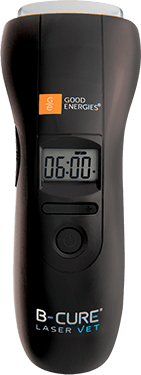Laser Therapy for Dog Gingivitis: A Non-Invasive and Promising Treatment
Gingivitis is a common dental problem that affects many dogs, causing discomfort and potentially leading to more severe oral health issues if left untreated. While traditional treatments such as dental cleanings and medications have been effective, laser therapy is emerging as a modern and promising approach to treating dog gingivitis. In this blog post, we will explore the use of laser therapy for dog gingivitis, how it works, its benefits, and its growing popularity in veterinary practices.
Understanding Dog Gingivitis
Dog gingivitis is an inflammatory condition of the gums, triggered by the accumulation of plaque and tartar on a dog’s teeth. The bacterial buildup irritates the gums, leading to redness, swelling, and potential bleeding. If not addressed promptly, gingivitis can progress to more serious periodontal disease, causing tooth loss and impacting the dog’s overall health and well-being.
Traditional Treatments for Dog Gingivitis
Traditionally, dog gingivitis has been managed through dental cleanings performed by veterinarians. These cleanings involve the removal of plaque and tartar from the teeth using specialized instruments. In more severe cases, antibiotics and pain medications may be prescribed to manage the inflammation and discomfort.
The Emergence of Laser Therapy for Dog Gingivitis
In recent years, laser therapy has gained popularity as a non-invasive and promising treatment for various medical conditions in both humans and animals. It involves the use of focused laser light to stimulate cellular activity, promote tissue repair, and reduce inflammation. This cutting-edge approach has found its way into veterinary practices, and it’s proving to be an effective tool in treating dog gingivitis.
How Laser Therapy Works for Dog Gingivitis?
Laser therapy for dog gingivitis is typically performed with a low-level laser, also known as cold laser therapy. The laser emits light energy of specific wavelengths, which is directed onto the affected gum tissues. Unlike surgical lasers, cold lasers do not cut or burn the tissues; instead, they penetrate the skin, stimulating the cells within the gum tissue.
When the laser light interacts with the cells, it triggers a series of biochemical reactions that promote cellular metabolism and circulation. This, in turn, stimulates the body’s natural healing processes. The increased blood flow to the area helps remove toxins and reduces inflammation, leading to improved tissue repair and regeneration.
Benefits of Laser Therapy for Dog Gingivitis
- Non-Invasive and Painless: Laser therapy is non-surgical and non-invasive, meaning it does not require any incisions or sutures. It is a painless procedure, making it a more comfortable option for dogs compared to traditional surgical treatments.
- Reduced Inflammation: Laser therapy targets the inflamed gum tissues, reducing swelling and tenderness. This leads to increased comfort for the dog and allows for improved oral health.
- Faster Healing: The stimulation of cellular activity through laser therapy accelerates the healing process. This can result in faster recovery and a quicker resolution of gingivitis symptoms.
- No Anesthesia Required: Since laser therapy is non-invasive, it can often be performed without the need for general anesthesia. This reduces the risks associated with anesthesia and allows for a quicker procedure.
- Minimally Disruptive: Dogs undergoing laser therapy typically experience minimal discomfort or downtime, enabling them to return to their regular activities sooner.
Growing Popularity in Veterinary Practices
As more veterinarians recognize the benefits of laser therapy for treating various conditions, including dog gingivitis, the popularity of this innovative treatment is steadily increasing. Veterinarians are adopting laser therapy as a complementary or standalone treatment for a wide range of issues, including arthritis, wounds, and dental problems like gingivitis.
Conclusion
Laser therapy is a modern and promising approach to treating dog gingivitis, offering numerous benefits over traditional treatments. Its non-invasive nature, reduced inflammation, faster healing, and growing popularity in veterinary practices make it an attractive option for pet owners and veterinarians alike. However, it’s essential to remember that laser therapy should only be administered by trained professionals who understand its application and safety protocols.
As laser therapy continues to evolve and gain recognition in the field of veterinary medicine, it opens new possibilities for improving the oral health and overall well-being of our canine companions. If your dog is experiencing gingivitis or any other dental issue, consult with your veterinarian to determine if laser therapy could be a suitable and effective treatment option for your furry friend.




